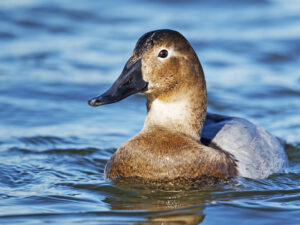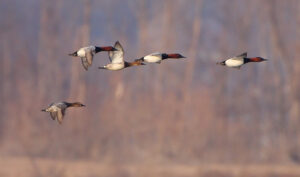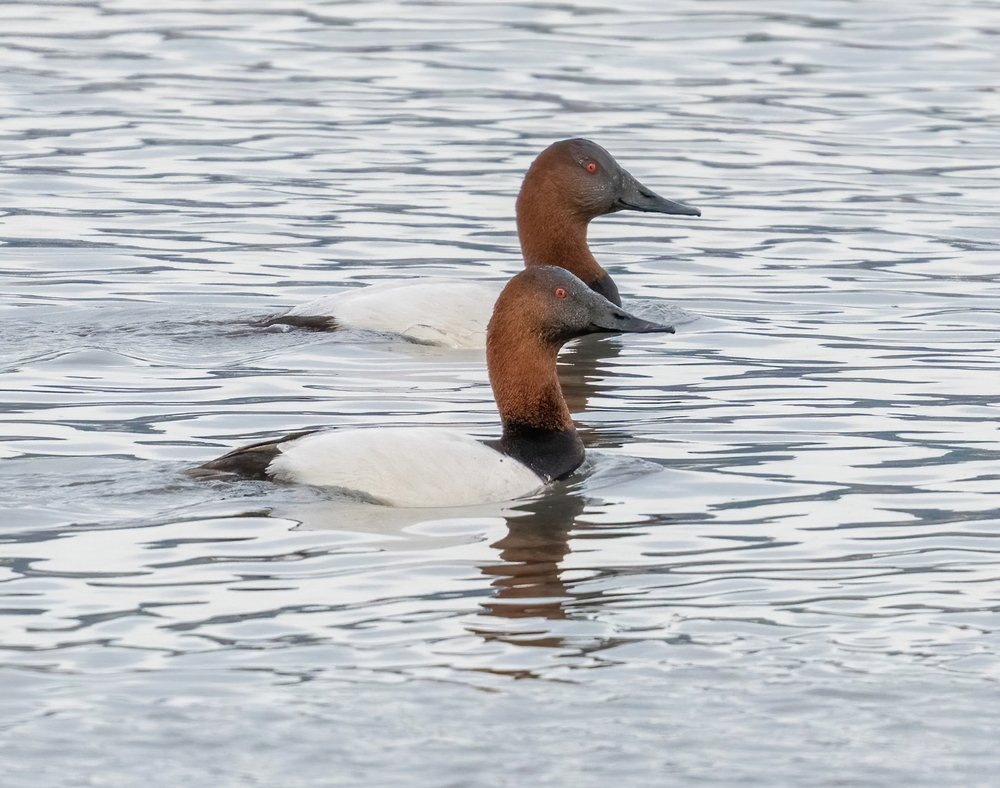Canvasback, Aythya valisineria
Bill Rowe
North America’s ducks come in a wide assortment of shapes, colors, and sizes; here in the Midwest, late fall, winter, and early spring are the prime times for enjoying the greatest variety of ducks before most of them head back north again. The Canvasback, named for the sail-like whiteness of its body, is a distinctive one both by color and by shape, and it typically shares the deeper water with other diving ducks like its close cousins the Redhead and the two scaup species, plus the Common Goldeneye (a recent Bird of the Week) and some others. It became famous as a desirable bird for the table back in the nineteenth century—for instance around Chesapeake Bay, where its staple food was wild celery. This diet has changed at least somewhat, but wintering Canvasbacks still subsist primarily on submerged plant life, and hunters still prize the bird. The rules for taking it (where, when, and how many) are carefully micromanaged and may change every year by region, depending on its nesting success in the prairie potholes of the northern Great Plains and its overall population, which may fluctuate rather widely on either side of half a million. Thus by bird standards it isn’t all that numerous, even though locally it can seem abundant at certain times (see St. Louis status). Like many other birds, the Canvasback is limited to North America but has a counterpart in Eurasia, the Common Pochard, that looks much like it and fills much the same ecological niche.
IDENTIFICATION: More than most ducks, Canvasbacks can be identified simply by silhouette: their ski-slope profile, from the forehead down through the long, tapered bill, is unique. But the same is true of their color scheme: the male’s rusty red-brown head, black chest, and all-white body are pretty much unmistakable, while the female echoes this pattern with a more modest, paler-brown head and silvery-gray body.
ST. LOUIS STATUS: Found regularly, in season, on lakes and rivers with reasonably deep water and a good source of underwater food; it is commonest by far, however, on and near the Mississippi River. Numbers are highly variable, with larger flocks generally occurring in colder weather, but the vagaries of weather can sometimes bring truly impressive numbers for a short while, as happened this month on the Mississippi at Winfield, where a few observers witnessed a huge pileup of Canvasbacks above the dam, estimated at possibly 8000-9000 birds.
Learn more and listen to the calls of Canvasbacks here.


Female
Canvasbacks in flight
Photo Credit: Al Smith




